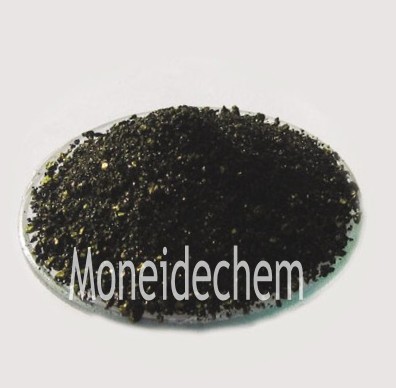Moneide Chemicals
Tel: 86-315-8309571
WhatsApp/WeChat/Mobile: 0086-15633399667
Skype: janet-honest
Mail: sales@moneidechem.com
Adresse: 2-7-523 Jidong Baumaterialien Tangshan, Hebei 064000 China
Bismarck Brown Y
|
Chemischer Name |
Bismarck Brown Y |
|
Synonyme |
Basic Brown 1; 4,4'-[1,3-Phenylenebis(azo)]-bis[1,3-benzenediamine] dihydrochloride |
|
CAS-Nr. |
10114-58-6 |
|
Summenformel |
C18H18N8.2(HCl) |
|
EINECS-Nr. |
233-314-3 |
|
Molekulargewicht |
419.31 |
|
Molekulare Struktur |
|
|
Details |
Appearance: fuscous powder Biological dyeing test: pass |
|
Hauptanwendung |
Used as biological dyeing agents. |
What is Bismarck Brown Y dye used for?
Bismarck Brown Y is a cationic azo dye primarily employed in biological staining and textile applications. In histology, it serves as a selective stain for acid mucopolysaccharides and mast cell granules, helping identify these structures in tissue samples. The dye is particularly valued in dermatopathology for staining elastic fibers when combined with other dyes in special staining protocols. Beyond microscopy, it finds use in leather dyeing and paper coloration, where its warm brown hue is desirable. The textile industry utilizes it for dyeing silk, wool, and modified acrylic fibers. Recent applications include its use as a photosensitizer in dye-sensitized solar cells and as a staining agent in bacteriological research, demonstrating its versatility across scientific and industrial fields.
Is Bismarck Brown Y acidic or basic?
Bismarck Brown Y is a basic (cationic) dye due to its positively charged diazonium groups that enable strong electrostatic binding to negatively charged cellular components. The dye's molecular structure contains amino groups that become protonated in aqueous solutions, giving it an overall positive charge. This basic character makes it particularly effective for staining acidic structures like nucleic acids and certain carbohydrates in biological specimens. While the dye itself is basic, it can function across a range of pH conditions, maintaining its staining properties in both slightly acidic and neutral environments. The compound's pH stability contributes to its reliability in various staining protocols where consistent results are essential.
What are the benefits of Bismarck Brown Y?
Bismarck Brown Y offers several advantages, including excellent staining specificity for particular tissue components and strong colorfastness properties. Its cationic nature provides superior penetration and binding to cellular structures, yielding clear, durable staining results. The dye demonstrates good solubility in both water and alcohol, facilitating flexible preparation of staining solutions. Compared to similar dyes, it shows relatively low toxicity, making it safer for routine laboratory use. Its warm brown coloration provides excellent contrast when used in combination with other stains in multicolor protocols. The dye's stability in solution and resistance to fading contribute to long-term preservation of stained specimens. These combined characteristics make it a cost-effective, reliable choice for both diagnostic and research applications.






























